|
|
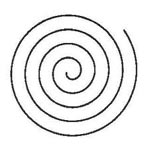 The Sacred Spiral – The spiral represents the universal pattern of growth and evolution. The spiral represents eternity and continuity. The spiral in nature appears frequently. It is a symbol that represents innocence, rebirth, and the eternal. The sacred spiral is also an energetic symbol, and it represents energy. In fact, if you look at pure energy under a microscope, you will see that energy forms spiral patterns. The Sacred Spiral – The spiral represents the universal pattern of growth and evolution. The spiral represents eternity and continuity. The spiral in nature appears frequently. It is a symbol that represents innocence, rebirth, and the eternal. The sacred spiral is also an energetic symbol, and it represents energy. In fact, if you look at pure energy under a microscope, you will see that energy forms spiral patterns. |
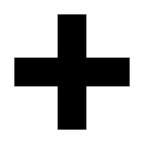 Equal Armed Cross – The Equal-Armed Cross, also referred to as the square cross, the balanced cross, and the peaceful cross, is a name for the Greek Cross when this is found in ancient cultures predating Christianity. The equal-armed cross was well-known as a sacred symbol. It is often interpreted as representing the four seasons, four winds, four elements, or some other aspect of physical nature. An equal-armed cross (often within a circle) represents the planet Earth in traditional astrological-astronomical symbols. The cross could also be used to represent the natural union between males and females. Equal Armed Cross – The Equal-Armed Cross, also referred to as the square cross, the balanced cross, and the peaceful cross, is a name for the Greek Cross when this is found in ancient cultures predating Christianity. The equal-armed cross was well-known as a sacred symbol. It is often interpreted as representing the four seasons, four winds, four elements, or some other aspect of physical nature. An equal-armed cross (often within a circle) represents the planet Earth in traditional astrological-astronomical symbols. The cross could also be used to represent the natural union between males and females. |
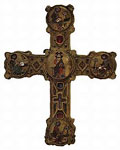 Christian Cross Christian Cross
The Christian cross, seen as a representation of the instrument of the crucifixion of Jesus Christ, is the best-known religious symbol of Christianity. It is related to the crucifix (a cross that includes a usually three-dimensional representation of Jesus’ body) and to the more general family of cross symbols. The cross-shaped sign, represented in its simplest form by a crossing of two lines at right angles, greatly antedates the introduction of Christianity in both East and West. It goes back to a very remote period of human civilization. It is supposed to have been used not just for its ornamental value but also for its religious significance. |
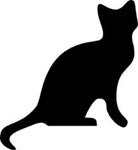 The Cat – known in Ancient Egypt as the Mau, was sacred and important in ancient Egyptian society. Beginning as a wild, untamed species, cats were useful for limiting vermin in Egyptian crops and harvests; through exposure, cats became domesticated and learned to coexist with humans. The people in what would later be Upper and Lower Egypt had a religion centred around worshiping animals, including cats. The Cat – known in Ancient Egypt as the Mau, was sacred and important in ancient Egyptian society. Beginning as a wild, untamed species, cats were useful for limiting vermin in Egyptian crops and harvests; through exposure, cats became domesticated and learned to coexist with humans. The people in what would later be Upper and Lower Egypt had a religion centred around worshiping animals, including cats.
Praised for controlling vermin and its ability to kill snakes such as cobras, the domesticated cat symbolized grace and poise. The goddess Mafdet, the deification of justice and execution, was lion-headed. The cat goddess Bast (also known as Bastet) eventually replaced the cult of Mafdet, and Bast’s image softened over time. She became the deity representing protection, fertility, and motherhood. |
 Crucifix – cross with a representation of Jesus’ body hanging from it. It is primarily used in Catholic, Anglican, Lutheran, and Eastern Orthodox churches (where the figure is painted), and it emphasizes Christ’s sacrifice – his death by crucifixion. The crucifix is still sacred today as it was in ancient times. Crucifix – cross with a representation of Jesus’ body hanging from it. It is primarily used in Catholic, Anglican, Lutheran, and Eastern Orthodox churches (where the figure is painted), and it emphasizes Christ’s sacrifice – his death by crucifixion. The crucifix is still sacred today as it was in ancient times. |
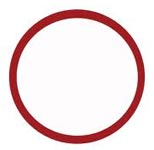 Circle – An ancient and universal symbol of unity, sacred-ness, wholeness, infinity, the goddess, female power, and the sun. To earth-centred religions throughout history, as well as to many contemporary pagans, it represents the feminine spirit or force, the cosmos or a spiritualized Mother Earth, and sacred space. Circle – An ancient and universal symbol of unity, sacred-ness, wholeness, infinity, the goddess, female power, and the sun. To earth-centred religions throughout history, as well as to many contemporary pagans, it represents the feminine spirit or force, the cosmos or a spiritualized Mother Earth, and sacred space. |
|
The ankh was almost never drawn in silver; as a sun symbol, the Egyptians almost invariably crafted important examples (for tombs or other purposes) from the metal they most associated with the sun, gold. A similar metal, such as copper, burnished to a high sheen, was also sometimes used. |
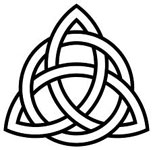 The Celtic Trinity knot is also known by the name ‘Triquetra.’ The triquetra was considered sacred by the Celts. There are many different views/opinions about the meaning of the Trinity Celtic symbol. As per the early Christians, the Celtic Trinity knot is associated with or viewed as the Father, Son, and Holy Spirit. The trinity knot is seen by those who believe in paganism as a symbol of Mother, Crone, and Maiden. The Celtic Trinity knot is also known by the name ‘Triquetra.’ The triquetra was considered sacred by the Celts. There are many different views/opinions about the meaning of the Trinity Celtic symbol. As per the early Christians, the Celtic Trinity knot is associated with or viewed as the Father, Son, and Holy Spirit. The trinity knot is seen by those who believe in paganism as a symbol of Mother, Crone, and Maiden. |

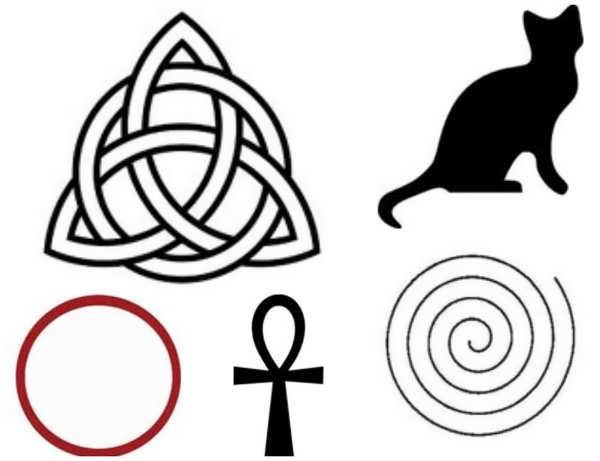
 Goddess – A goddess is a female deity. In some cultures, goddesses are associated with Earth, motherhood, love, and the household. In other cultures, goddesses also rule over war, death, destruction, and healing. The Goddess is symbolic of the universe’s regenerative, creative and life-giving energies. The goddess is the keeper of wisdom. She is the spirit of both Earth and the heavens. In ancient times, the Goddess was a sacred symbol in many regions.
Goddess – A goddess is a female deity. In some cultures, goddesses are associated with Earth, motherhood, love, and the household. In other cultures, goddesses also rule over war, death, destruction, and healing. The Goddess is symbolic of the universe’s regenerative, creative and life-giving energies. The goddess is the keeper of wisdom. She is the spirit of both Earth and the heavens. In ancient times, the Goddess was a sacred symbol in many regions.